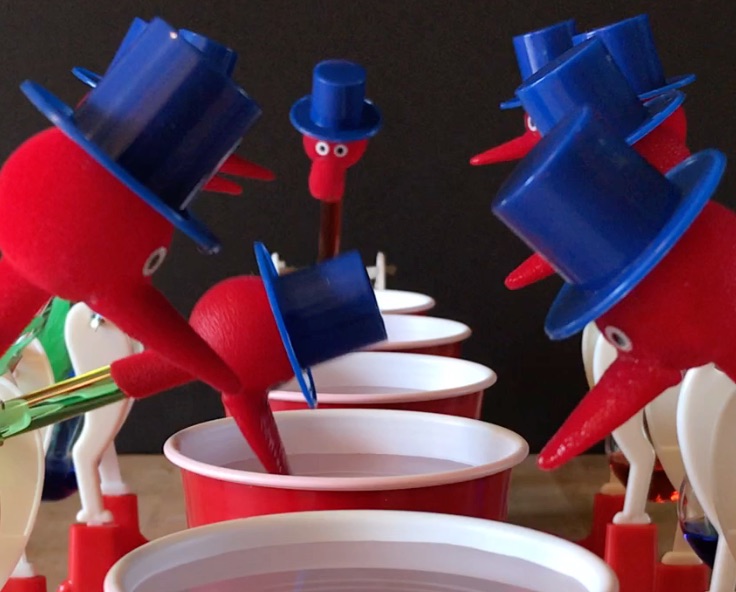The Gravity Light
Description: The Gravity Light converts potential energy that is stored in a weight into light. The principles involved in this design are very similar to the principles in a cuckoo clock, with the potential energy of the weight being converted to solar energy rather than kinetic energy. Gravity Lights can replace kerosene lights in the developing world with a safe alternative. The phenomenon can be used to illustrate the conversion of potential gravitational energy into other forms of energy. More importantly it conveys the message of sustainability and social responsibility.
Web Resource: The Gravity Light - Wikipedia, The Gravity Light Foundation
Amazing Rube Goldberg Machines
Description: Rube Goldberg machines are named after American cartoonist Rube Goldberg who drew complicated steps involved in doing a fairly simple task (like pouring milk in a glass). Students can study these machines, or build their own, to show how energy can be converted through a series of interactions. In lower elementary classes they might be shown or built to show how pushes or pulls can change the motion of objects. As they move through school they should start to identify specific collisions, interactions, and conversions of energy.
Web Resources: Rube Goldberg Machines - Wikipedia
Amazing Slinky Tricks
Description: The Slinky was invented by Richard James, an engineer, who was working with springs to support and stabilize equipment on a ship. Simple slinky tricks show how forces (pushes and pulls) change the direction of an object. Students can design a set of stairs, or obstacles, that the Slinky can navigate. In the secondary science classroom it can be used to investigate inertia, oscillations, and Hooke's law. This phenomenon can also be used to investigate wave properties.
Web Resource: Slinky - Wikipedia
Coupled Pendulum
Description: The coupled pendulum can be created with either string or a spring connecting the two pendulums. With each swing energy is transferred from one pendulum to the other. If the pendulums both have the same length one pendulum comes to a complete stop before alternating motion. This phenomenon can be used to show balanced and unbalanced forces, how motion can be used to predict future motion, and the conservation of energy.
Web Resource: L.R. Ingersoll Physics Museum
Giant Newton's Cradle
Description: The coupled pendulum can be created with either string or a spring connecting the two pendulums. With each swing energy is transferred from one pendulum to the other. If the pendulums both have the same length one pendulum comes to a complete stop before alternating motion. This phenomenon can be used to show balanced and unbalanced forces, how motion can be used to predict future motion, and the conservation of energy.
Web Resources: Giant Newton’s Cradle Website, Wikipedia article
The Drinking Bird
Description: The drinking bird is a toy heat engine. The source of energy in this phenomenon is a mystery to most students. It is said that Albert Einstein and his wife Elsa were fascinated with this toy when they visited Shanghai in the 1920's.
Web Resources: The Engineering of the Drinking Bird, The Drinking Bird - Wikipedia









